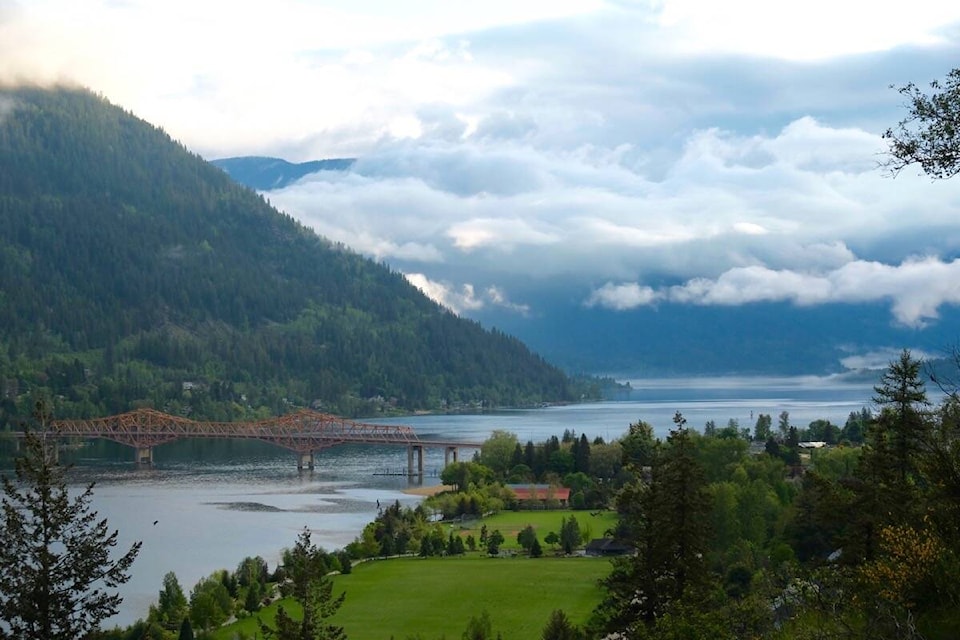by Mark Page
Local Journalism Initiative Reporter, Valley Voice
Since Living Lakes Canada identified 4.5 kilometres of Kootenay Lake’s natural shoreline lost to development over a nine-year period, the RDCK has been conducting a review of its lakeshore permitting guidelines.
Final information sessions were held on Nov. 8 and 9, examining the possibility of altering lakeshore permitting to prevent accelerating lakeshore disturbance and natural habitat degradation on Kootenay Lake.
RDCK planners are now set to recommend the creation of a draft plan to change Environmental Development Permit Areas (EDPAs) in all electoral areas along the lake – Areas A, D, E and F.
The RDCK board of directors will first need to give the go-ahead for planners to start drafting new EDPAs. The process would then take about four-to-six more months before the new rules would be ready to go back to the board for a vote, according to RDCK planner Corey Scott. This means it would likely be early summer 2023 by the time the board could vote on adopting the EDPAs.
Scott said the recommendation will be that these new EDPAs are uniform around the entire lake – that they all be 30 metres wide, extending inland from the lakeshore. In these zones, most types of development would require a permit and an environmental assessment. Currently, there are similar rules in place in Area D while Areas A and E have 15-metre EDPAs and Area F has none at all.
Changes would address “gaps or pitfalls in the process” and create rules following best practices from other parts of the province, Scott said.
Guidance for planners comes from the Kootenay Lake Foreshore Integrated Management Planning (FIMP) document produced by Living Lakes, which is now being considered by RDCK staff as the “preferred approach” for the new rules. Feedback from the information sessions and consultation with the Ktunuxa Nation Council will also factor into any new rules.
Kerri Gardner of the Ktunaxa Nation Council was on hand at the info sessions to provide the public with examples of what KNC wants protected and why. She highlighted the need to protect kokanee salmon, whitebark pine trees and access to traditional use areas.
The overarching goal of EDPAs is to protect riparian zones, which are the transition areas between land and lake. RDCK staff would like to have a consistent approach around the entire lake and one that is more efficient and effective in rehabilitating and restoring natural habitat.
“The FIMP project demonstrates that the current regulatory framework has been unsuccessful in protecting riparian areas,” wrote Scott in a July 7 report to RDCK’s Rural Affairs Committee.
This does not mean prohibiting development in these areas. When an EDPA is in place, an assessment must be done by a qualified environmental professional before work can begin. A setback from the lakeshore could be required in areas identified as at-risk of permanent loss for fish and wildlife habitat. The bill for having a professional come out and do one of these assessments could cost $2,000 or more, depending on the site, Scott told those attending the online info session.
Exemptions to current EDPAs have long existed for agricultural and industrial operations and these could be altered or removed, according to Scott. Agricultural activity could retain its exemption if best practices are followed as outlined by the Ministry of Agriculture, while new industrial and institutional projects could lose their exemptions if current recommendations are adopted.
Justification for the proposed changes are detailed in Scott’s July 7 report. He writes the 30-metre permit area “provides the greatest potential to preserve, enhance, and restore fish and wildlife habitat.”
“At the provincial level it’s 30 metres, and it’s 30 metres for a reason,” Scott said, adding this is also the resounding feedback from biologists consulted during the process.
During the info session, Scott outlined what could happen if no action is taken and the status quo remains for development permit areas on the lake.
“There’s a risk the province could step in and say ‘you know what, you’re not doing a good enough job protecting the habitat along Kootenay Lake so we’re going to intervene,’” he said, adding this is what happened in the earlier 2000s in other parts of the province.
Several comments from the public during the session revolved around bylaw enforcement, with some complaining of neighbours ignoring permitting regulations altogether.
“A big piece is the education piece. A lot of people aren’t aware, or don’t want to be aware because they own the property,” said local environmental consultant Sylvie Masse. “Owning waterfront property comes with a certain amount of responsibility.”
RDCK planning manager Nelson Wight said that even with the proposed changes, the goal of protecting the lakeshore needs buy-in from local residents.
“To do that is going to take a shift in thinking and in culture,” he said, “and participation of everybody.”
The public is encouraged to use feedback forms on the RDCK website to provide input before Dec. 1 in order to have their say on whether or not to update the EDPAs. The public will again get a chance to comment if new EDPAs eventually go to the RDCK board of directors for a vote.
